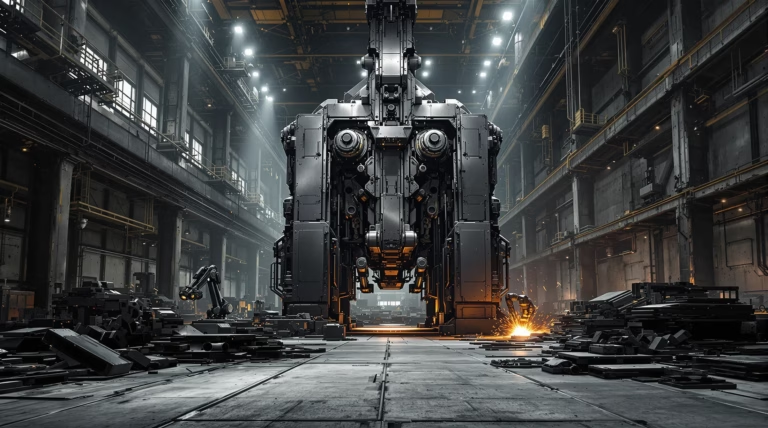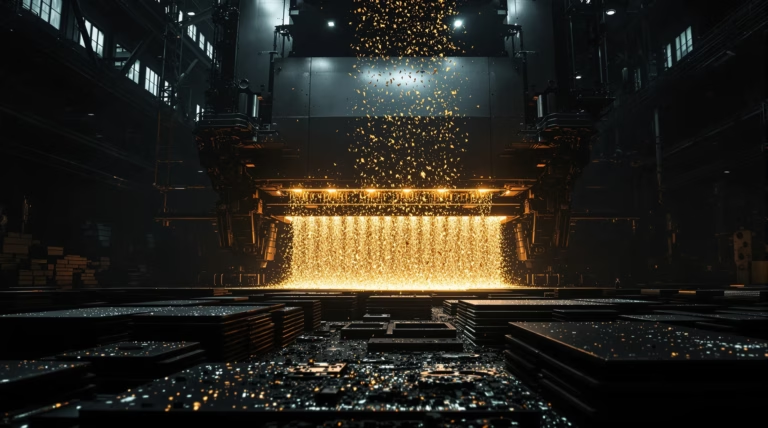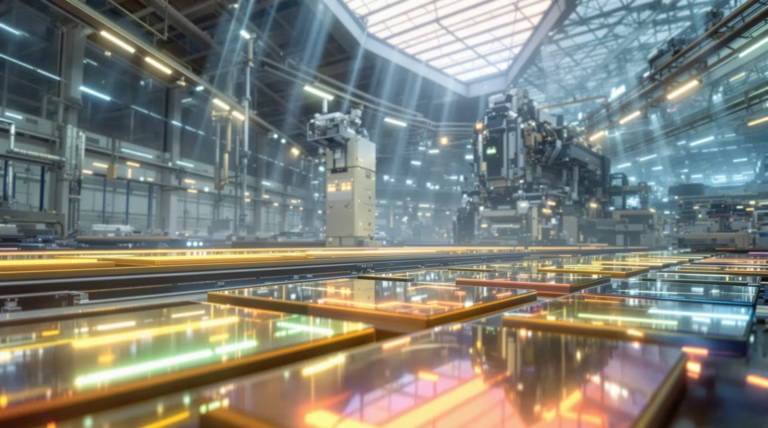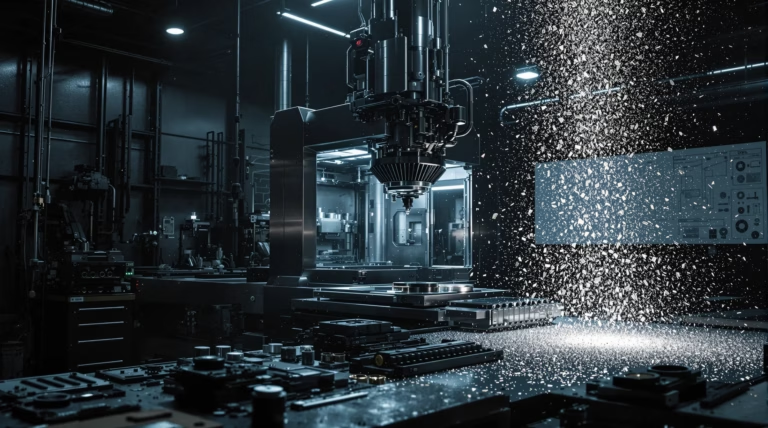EDM Machining: Understanding Electrical Discharge Machining Techniques
Discover the revolutionary world of Electrical Discharge Machining (EDM), a cutting-edge manufacturing process that’s transforming how we shape and manipulate metals. This comprehensive guide explores the intricacies of EDM technology, its applications, and why it’s becoming increasingly vital in modern manufacturing.
What is EDM Machining?
Electrical Discharge Machining (EDM) represents a sophisticated manufacturing process that harnesses electrical discharges to precisely remove material from workpieces. Unlike traditional machining methods that rely on physical contact, EDM utilizes thermal energy through controlled electrical sparks between electrodes.
This non-contact technique excels at processing extremely hard metals and creating complex geometries with remarkable precision – achieving tolerances of ±0.0025mm. EDM proves particularly valuable when working with:
- Hardened steel components
- Titanium alloys
- Carbide materials
- High-strength conductive metals
- Complex geometric shapes
The Basic Principles of EDM
At its core, EDM operates through controlled electrical erosion. The process involves two electrodes submerged in a dielectric fluid, typically paraffin or kerosene. When voltage reaches a critical threshold, it creates a plasma channel that enables current flow, generating temperatures up to 12,000°C.
This process occurs in rapid cycles:
- Voltage application across the electrode gap
- Dielectric breakdown and plasma channel formation
- Material melting and vaporization
- Dielectric fluid flushing of eroded particles
- Cooling and preparation for the next cycle
History and Evolution of EDM Technology
EDM’s journey began in the 1770s with English scientist Joseph Priestley’s discovery of electrical discharge erosion. However, its practical application emerged during World War II, when Soviet researchers Boris and Natalya Lazarenko developed the first controlled EDM process.
| Era | Development |
|---|---|
| 1970s-1980s | Introduction of CNC systems and improved precision |
| 1990s | Development of wire EDM with advanced servo systems |
| Modern Era | Integration of adaptive control algorithms and simulation software |
Types of EDM Processes
EDM encompasses three distinct variants, each utilizing electrical discharges for material removal but differing in their setup and applications. These processes operate in a dielectric fluid environment, generating controlled electrical discharges that produce intense localized heat for material removal.
Wire EDM: Precision Cutting with Wire
Wire EDM employs a thin, continuously moving wire electrode for precise cutting operations. This sophisticated process achieves exceptional accuracy with the following characteristics:
- Wire diameter: 0.1 to 0.3mm
- Material options: brass, copper, or coated materials
- Precision capability: ±0.001mm tolerance
- Advanced features: 5-axis machining support
- Specialized applications: complex profile cutting in hardened materials
Sinker EDM: Creating Complex Shapes
Sinker EDM utilizes shaped electrodes to create precise three-dimensional cavities. This method excels in mold making and complex feature creation, offering:
- Superior surface quality
- Ability to create intricate, non-machinable features
- Stress-free material removal
- Automated parameter adjustment
- Cost-effective production for multiple identical components
Hole Drilling EDM: Precision Bore Holes
Hole Drilling EDM represents a specialized technique for creating precise, small-diameter holes with exceptional aspect ratios that conventional drilling methods cannot achieve. The process employs tubular electrodes, typically made of brass or copper, featuring internal flushing channels that deliver dielectric fluid directly to the cutting zone. This advanced method can produce holes as small as 0.1mm in diameter while maintaining remarkable straightness over substantial depths.
- Maintains consistent dimensional accuracy throughout hole length
- Creates precise bore profiles matching electrode specifications
- Eliminates burrs and produces excellent surface finishes
- Achieves aspect ratios exceeding 100:1
- Maintains positional accuracy within microns
Comparing EDM with Other Machining Techniques
Electrical Discharge Machining (EDM) presents a revolutionary approach distinct from conventional machining methods. Instead of relying on physical contact between tools and workpieces, EDM utilizes electrical sparks for material removal, offering unique advantages in precision manufacturing while presenting specific trade-offs.
| Characteristic | EDM | Traditional Methods |
|---|---|---|
| Contact Type | Non-contact (electrical) | Physical contact |
| Material Removal Rate | Slower | Faster |
| Operational Costs | Higher | Lower |
| Precision Level | Superior | Good |
EDM vs CNC Machining
The fundamental distinction between EDM and CNC machining lies in their material removal mechanisms. While CNC machining employs mechanical cutting forces through rotating tools, EDM utilizes thermal energy from electrical discharges. This creates significant differences in application suitability:
- CNC offers faster material removal rates and lower operational costs
- EDM excels in creating complex internal features
- CNC works with non-conductive materials like plastics and wood
- EDM provides superior surface finishes with tighter tolerances
- Both technologies often complement each other in manufacturing environments
EDM vs Traditional Machining Methods
Traditional machining processes face limitations that EDM effectively overcomes in specific applications. EDM’s ability to work with materials regardless of hardness represents its most significant advantage over conventional methods. While traditional machining struggles with extremely hard metals, EDM maintains consistent effectiveness across the hardness spectrum.
- Deep cavities with square corners become achievable
- High aspect ratio narrow slots can be created
- Complex internal geometries are possible
- No workpiece distortion due to absence of cutting forces
- Ideal for thin-walled components and delicate structures
Applications of EDM in Various Industries
EDM technology has become indispensable across numerous high-precision industries, offering unique capabilities for manufacturing complex components. Its ability to machine extremely hard conductive materials with exceptional accuracy makes it particularly valuable for specialized applications that conventional methods cannot effectively address.
- Creation of microscopic holes smaller than 0.1mm
- Manufacturing of complex dies and molds
- Production of high-precision components
- Processing of difficult-to-machine materials
- Development of intricate geometric features
EDM in the Aerospace Industry
The aerospace industry relies heavily on EDM technology for manufacturing mission-critical components that demand exceptional precision. The non-contact machining process proves invaluable when working with high-grade nickel alloys and heat-resistant materials used in aircraft engines.
- Turbine discs and compressor components production
- Stator vanes manufacturing with superior surface integrity
- Precision cooling holes in turbine blades
- Fuel injection nozzle fabrication
- Complex structural component creation
- High aspect ratio holes for fuel systems
- Hydraulic manifold manufacturing
- Flight control mechanism production
EDM in the Automotive Industry
In automotive manufacturing, EDM has become essential for high-volume production processes, particularly in tooling and die creation. The technology’s precision capabilities enable manufacturers to meet increasingly stringent requirements while maintaining cost-effectiveness.
- Complex injection molds for plastic components
- Stamping dies for body panels
- Precision transmission components
- High-performance engine parts
- Fuel injection system elements
- Electric vehicle battery connections
- Motor components with tight tolerances
- Air brake and pneumatic system parts
EDM in the Medical Industry
The medical sector leverages EDM’s exceptional precision for manufacturing life-critical devices and surgical instruments. The technology’s ability to create microscopic features with flawless surface quality makes it indispensable for medical manufacturing.
| Application | Key Benefits |
|---|---|
| Implantable Devices | Microscopic features, flawless surface quality |
| Orthopedic Implants | Complex geometries, biocompatible materials |
| Dental Components | Precise fit, burr-free surfaces |
| Surgical Instruments | Sharp cutting edges, complex articulation |
Advantages and Limitations of EDM Machining
EDM technology offers a unique approach to manufacturing through controlled electrical discharges rather than mechanical cutting forces. This non-contact process enables stress-free machining with localized heating, particularly valuable for delicate workpieces requiring exceptional precision.
Advantages of Using EDM
- Creation of complex geometries impossible with conventional methods
- Sharp internal corners and deep cavities with minimal taper
- Precision tolerances up to ±0.001mm
- Superior surface finishes reaching 0.4 Ra μm
- Effective processing of hardened materials and exotic alloys
- Minimal mechanical stress on workpieces
- Consistent results regardless of material hardness
Limitations and Challenges of EDM
- Material compatibility – requires electrically conductive workpieces, excluding ceramics, most polymers, and non-conductive composites
- Slower production rates compared to traditional machining methods
- Higher operational costs due to energy-intensive processes
- Need for specialized equipment and trained operators
- Electrode wear issues, particularly in Sinker EDM
- Multiple electrodes required for precision work
- Less economical for high-volume production
Materials Suitable for EDM Machining
Electrical Discharge Machining operates exclusively with electrically conductive materials, making it particularly effective for hard-to-machine materials that challenge conventional methods. The non-contact nature of EDM enables material removal through electrical discharges rather than mechanical forces, allowing direct machining of pre-hardened materials without secondary heat treatment operations.
Common Materials Machined with EDM
| Material Category | Specific Materials | Common Applications |
|---|---|---|
| Tool Steels | D2, A2, M2, H13 | Tooling applications |
| Titanium Alloys | Ti-6Al-4V, Ti-6Al-2Sn-4Zr-2Mo | Aerospace and medical components |
| Hard Materials | Tungsten, Tungsten Carbide | Cutting tools, wear parts |
| Stainless Steels | 17-4 PH, 316L | Precision components |
| Superalloys | Inconel, Hastelloy | High-temperature applications |
Safety Considerations in EDM Machining
EDM operations require strict adherence to safety protocols due to significant electrical hazards. Operators must utilize proper personal protective equipment and ensure all metal components are adequately grounded to prevent electrocution risks.
Dielectric Fluid Management and Fire Prevention
- Installation of proper ventilation systems for vapor removal
- Regular monitoring of dielectric fluid circulation
- Maintenance of fluid filtration systems
- Implementation of fire suppression systems
- Proper fluid handling, storage, and disposal procedures
- Regular inspection of fluid containment systems
Operational Best Practices
- Comprehensive operator training programs
- Regular safety awareness refresher courses
- Implementation of standard operating procedures
- Pre-operation safety checks
- Proper machine startup and shutdown sequences
- Emergency response protocols
- Lockout/tagout procedures for maintenance
- Regular preventative maintenance schedules
Future Trends and Innovations in EDM Technology
The landscape of Electrical Discharge Machining (EDM) is undergoing significant transformation through emerging technologies and ongoing research. Current developments focus primarily on enhancing machining efficiency and precision accuracy, addressing traditional limitations such as slow material removal rates and high operational costs.
- Integration with complementary technologies for hybrid manufacturing solutions
- Advanced power supply technology developments
- Improved control systems implementation
- Enhanced dielectric fluid formulations
- Better surface quality achievements
- Increased machining speed capabilities
- Greater environmental sustainability measures
Emerging Technologies Influencing EDM
| Technology | Applications | Benefits |
|---|---|---|
| AI and Machine Learning | Process control, adaptive machining | Real-time optimization, predictive maintenance |
| Digital Twins | Virtual simulation | Reduced setup time, minimized waste |
| Advanced Materials | Electrode development | Superior wear resistance, improved thermal properties |
| Hybrid Manufacturing | Additive-EDM integration | On-demand electrode printing, reduced lead times |
Resources for Further Learning about EDM
- Professional Publications – “EDM Today” and “Advanced Manufacturing” featuring technical articles and case studies
- Technical Books – “Complete EDM Handbook” and “Electrical Discharge Machining: Theory and Practice” offering comprehensive knowledge
- Online Platforms – Udemy, Coursera, and LinkedIn Learning providing specialized courses
- Manufacturer Training – Programs by Makino, Sodick, and AgieCharmilles for equipment-specific expertise
Industry Forums and Professional Communities
- Online forums: Practical Machinist and CNC Zone for peer support
- Professional associations: Society of Manufacturing Engineers (SME)
- Trade organizations: Precision Metalforming Association (PMA)
- Industry events: IMTS and EMO Hannover showcasing latest technologies
- Technical conferences offering networking opportunities
- Webinars and technical sessions by industry experts







